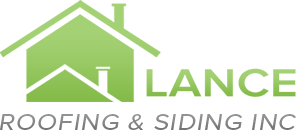Most homeowners are aware that storms with the accompaniment of high winds can have a detrimental effect on their roof. However, what many do not realize is that all it takes is one strong gust of wind to cause damage, and it can even happen on sunny and clear days. Today, we will discuss how high winds can damage your roof, how to spot the damage, and what you can do to prevent it.
How High Wind Can Damage Your Roof
High winds do not hit your roof evenly or at a consistent speed; instead, they swirl at an ever-changing pace with the brunt of the force hitting the corners, edge, and ridgeline. Three types of damage are the most commonly caused by high winds.
Ripping
If the wind can get under a corner or small piece of a shingle, it can bend, curl, or rip it clean off the roof.
Lifting
High winds coming over the roof can create a suction effect that will “lift” the shingles upwards. When this happens, the nails holding the shingles down can loosen, which can also cause the sealant underneath can break.
Falling Debris
Lastly, falling debris can create monumental damage. Tree limbs, decorations, furniture, and trash can cause deep scratches or puncture the roof.
How to Spot Wind Damage
Wind damage quite commonly causes leaks in the roof, which can lead to thousands of dollars in damage if not fixed immediately. Here is what you need to look for when locating wind damage:
- Water leaks
- Missing shingles
- Curling shingles
- Loosened nails
- Shingle granules in the gutter
- Missing or split chimney flashing
For more information on how to find damage on your roof, read our article on the 6 Signs of Roof Damage.
How to Prevent Wind Damage
While not all wind damage is preventable, there are steps that you can take to better protect your roof from the wind, including removing possible debris, investing in appropriate shingles, and getting regular roof inspections.
Remove Possible Debris
The best way to prevent falling debris from harming your roof is to remove them from the premises. If you have overhanging tree branches, get them cut back away from your home. If you have any furniture that could slide or fly in the wind, bolt it down. If there are decorations or garbage that could be lifted by the wind, only have it present when necessary.
Invest in Appropriate Shingles
Different shingle types are rated for how they perform when exposed to the wind; for example, Class A for shingles that passed testing at 60 mph, Class D for shingles that passed testing at 90 mph, and Class F for shingles that passed testing at 110 mph. If you are looking to protect your roof, choose the shingle that works best in your home’s environment.
Regular Inspections
There is a vast array of issues that can damage your roof, not just the wind. When this damage occurs, it will make your roof more vulnerable to wind and other damage in the future. By conducting regular inspections, by yourself and a professional, you can spot potential weaknesses in your roof before they become a costly problem. Give us a call today to schedule your roof inspection.


